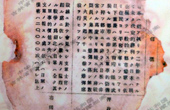Vietnam fooling no one
By Gong Yingchun (China Daily) Updated: 2014-06-13 07:40Hanoi should stop fabricating evidence and trying to renege on its recognition that Xisha Is lands are part of China's sovereign territory
Continuous actions taken by Vietnam since early May disturbing the normal drilling of a Chinese oil rig in the waters off Zhongjian Island, which belongs to China's Xisha Islands, have compromised China's sovereignty, sovereign rights, right of jurisdiction and the safety of the operating platform.
Given that its rashness has enlisted the support of the United States, Japan and the Philippines and has also caught the eye of some other countries, Hanoi has thus tried to play up the so-called Xisha Islands dispute by holding press conferences and listing heaps of specious historical and legal bases to boost its groundless claims.
How big an appetite on Earth does Vietnam have for the islands, reefs and natural resources in the South China Sea? How self-contradictory is Vietnam's fabricated "historical and legal evidence" which is full off laws?
Vietnam has presented to the international community an image of being weak while its vessels have intentionally crashed into China's vessels near the site of the Chinese oil rig. Those Hanoi sympathizers may have been blinded to the fact that Vietnam has claimed sovereignty over almost all the islands and reefs in the South China Sea. The 215 oil and gas blocks claimed by the Vietnamese government in the South China Sea are sufficient to expose Hanoi's ambitions for exclusive occupation of South China Sea resources and its impulse to turn the waters into the" sea of Vietnam".
The Xisha Islands were already included into the scope of China's sovereign jurisdiction at least by the 10th century. Even during the1930s, a time when China's national strength had fallen to an unprecedented weak position and during which China suffered from Japan's large-scale invasion, the Chinese government still filed protests against the illegal occupation of some of its South China Sea islands by the French colonial authorities. From 1934 to 1935, a committee was co-established by China's ministry of foreign affairs, ministry of internal affairs and naval headquarters. The committee made a special examination on various islands in the South China Sea, renamed the islands and reefs, and published an official map on which the Dongsha, Xisha, Zhongsha and Nansha islands were explicitly marked as China's territory.
Japan usurped from China the Xisha Islands in 1939, but after Tokyo's surrender in 1945, in accordance with the Cairo Declaration and other binding international documents, the Chinese government recovered its sovereignty over a series of China's territories including the Xisha and Nansha islands "stolen" by Japan. The Chinese government sent a flotilla of warships to the Xisha Islands in November1946 and the Nansha Islands in December 1946 to take over the sovereignty of the islands and erecting some monuments on them. Some Chinese soldiers were also left on these islands for defense.
On September 4,1958, the government of the People's Republic of China issued a statement, declaring 12 nautical miles as its territorial sea, and made it explicit that "this provision applies to all of its territories, including its Dongsha, Xisha, Zhongsha and Nansha islands as well as other islands whose sovereignty belongs to China".Following the statement, the Vietnamese prime minister Pham Van Dong sent a verbal note to Chinese premier Zhou Enlai, solemnly expressing that the government of the Democratic Republic of Vietnam" recognizes and endorses "the Chinese government's statement and "respects" such a decision by the Chinese government.











